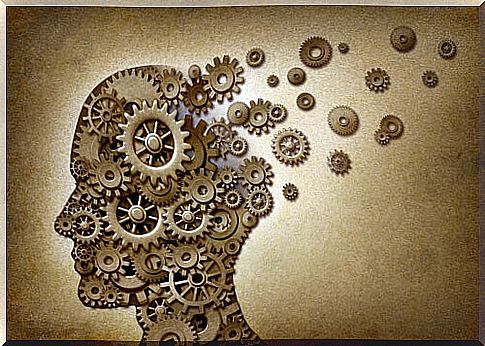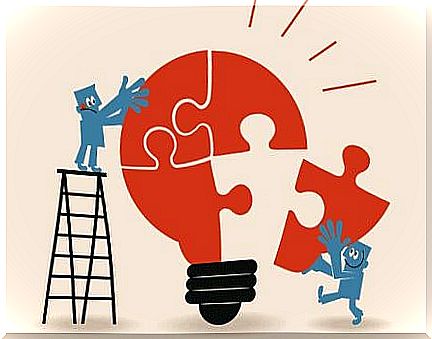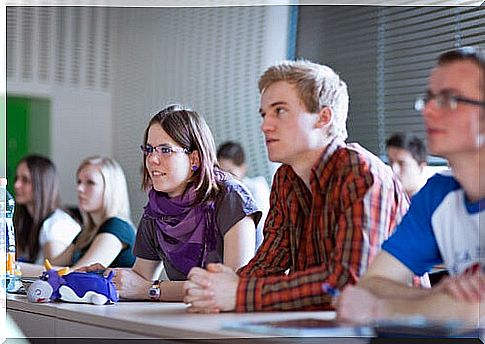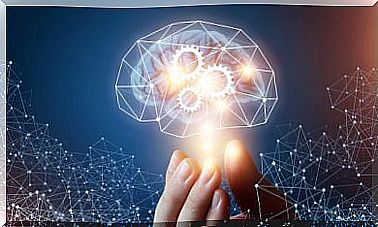Meaningful Learning: Definition And Characteristics

Throughout our school life, or simply observing in detail what happens to us, we immediately realize that not everything we learn is the same. The differences seem obvious when we compare deep learning, such as that derived from a topic of our interest, with remembering something boring literally and without giving it meaning. For this reason, David Ausubel studied the differences between these two learnings and developed his theory of meaningful learning based on them.
Many educational psychologists have focused their efforts on trying to develop models that describe how we acquire knowledge. Ausubel’s model of meaningful learning is one of the models that has most successfully explained how non-literal deep learning occurs. Thus, this is defined as a knowledge built and related to previous knowledge, where the subject acquires an active role, restructuring and organizing the information.
In this theory we can glimpse great constructivist influences. For David Ausubel, true knowledge is constructed by the subject through his own interpretations. For this reason, all knowledge based on literal memory would be nothing more than the result of repetitions with little or no meaning. In this type of knowledge, the interpretation of the subject would not come into play and it would hardly have a significant influence on the life of the person.
What is meaningful learning?
We could define meaningful learning in a very elementary way: it is feeling how suddenly all the pieces of a concept, an idea, a theory, formula or reasoning fit together. Most of us have felt that feeling. That what we learn is integrated into our mind and has a meaning for itself.
Stuart T. Haines, a professor at the University of Maryland School of Pharmacy and Medicine, conducted a study among his own students to find out how they integrated information and what methods they used. In fact, if he was aware of something, it was that the subject of memory was key in his subject.
Pharmacy curricula require each student to memorize nearly a thousand molecular entities and drug names. Well, something he was able to show is that only when those data to be remembered were meaningful and made sense to the student, did they not only retain the information much better, but also “transferred” it to long-term memory.
- Meaningful learning, therefore, is active, constructive and lasting,
- It implies understanding, feeling that the information is useful and not limiting ourselves, just memorizing.
- You need active learning techniques.
- It in turn involves relating new information to prior knowledge.
A change in the educational model
To know the nature of meaningful learning it is necessary to understand that Ausubel’s theory is a theory intended for direct application. Dr. Ausubel did not simply seek to describe the different types of learning; he was interested in bringing about a change in instruction.
As we have mentioned before, it is difficult for a literal or superficial learning to modify the student’s representations. This makes us question whether we can speak, in these cases, of real learning. Precisely from here arises the need to understand some key ideas on this subject.

- Meaningful learning is relational learning. It is related to previous knowledge and experiences. It involves a modification or a way of complementing our schemes or representations of reality, thus achieving deep learning. They are not simply memorized data, but a conceptual framework about how we see and interpret the reality that surrounds us.
- The idea therefore is to help students activate what they already know in order to show them new information. In this way, we get them to integrate this innovative data into their existing knowledge schemas (instead of asking them to create new knowledge schemas)
- Another task of teachers will be to show students what they do not know. In this way, we create a small cognitive imbalance in order to awaken intrinsic motivation in them, that is, the desire to learn.
Implications for instruction
This theory has strong implications for changing instructional methods. If we take even a cursory glance at current education, we notice numerous errors. The system is made to promote rote or literal learning, making students learn facts, formulas or names without any meaning.
In addition, thanks to the current evaluation system based on objective tests, superficial learning is more favored. This is because, to pass the exams, no significant learning is needed; And if what you are looking for is to get a good grade, rote learning will give better results with less effort.
Now, this leaves those who seek to understand the subject disheartened or do not understand why they have worse results.

The need for a change is more than evident. Especially because of the very positive data that all these attempts to apply and shape meaningful learning in the classrooms of high school and university students offer us. In fact, the Hong Kong Polytechnic University also carried out a program in their classrooms in order to encourage this type of approach and they found very positive data: meaningful learning enhances students’ sense of self-efficacy.
The keys to Ausubel
David Ausubel proposed the following principles that instruction should follow in order to achieve meaningful learning in his students. Let’s see them below.
- Take into account previous knowledge. Meaningful learning is relational, its depth lies in the connection between new content and previous knowledge.
- Provide activities that awaken the interest of the student. The more interested the student, the more willing he is to incorporate the new knowledge into his conceptual framework.
- Create a harmonious climate where the student feels confident towards the teacher. It is essential that the student sees in the teacher a figure of security so that he does not pose an obstacle in his learning.
- Provide activities that allow the student to comment, exchange ideas and debate. Knowledge has to be built by the students themselves, it is they who, through their conceptual framework, must interpret material reality.
- Explain by examples. The examples help to understand the complexity of reality and to achieve contextualized learning.
- Guide the cognitive learning process. Being a process where students are free when it comes to building knowledge, they can make mistakes. It is the role of the teacher to supervise the process and act as a guide during it.
- Create learning situated in the sociocultural environment l. All education is given in a social and cultural context, it is important that students understand that knowledge is of a constructed and interpretive nature. Understanding the why of different interpretations will help build meaningful learning.
We can easily sense that the commitment to a model in which meaningful learning prevails requires resources. The price is much higher than the other way of learning that we have alluded to in this article (literal or superficial learning) and that is much more common in today’s schools. However, the real question is, which one do we want? Or, deep down, which one is really more expensive?









